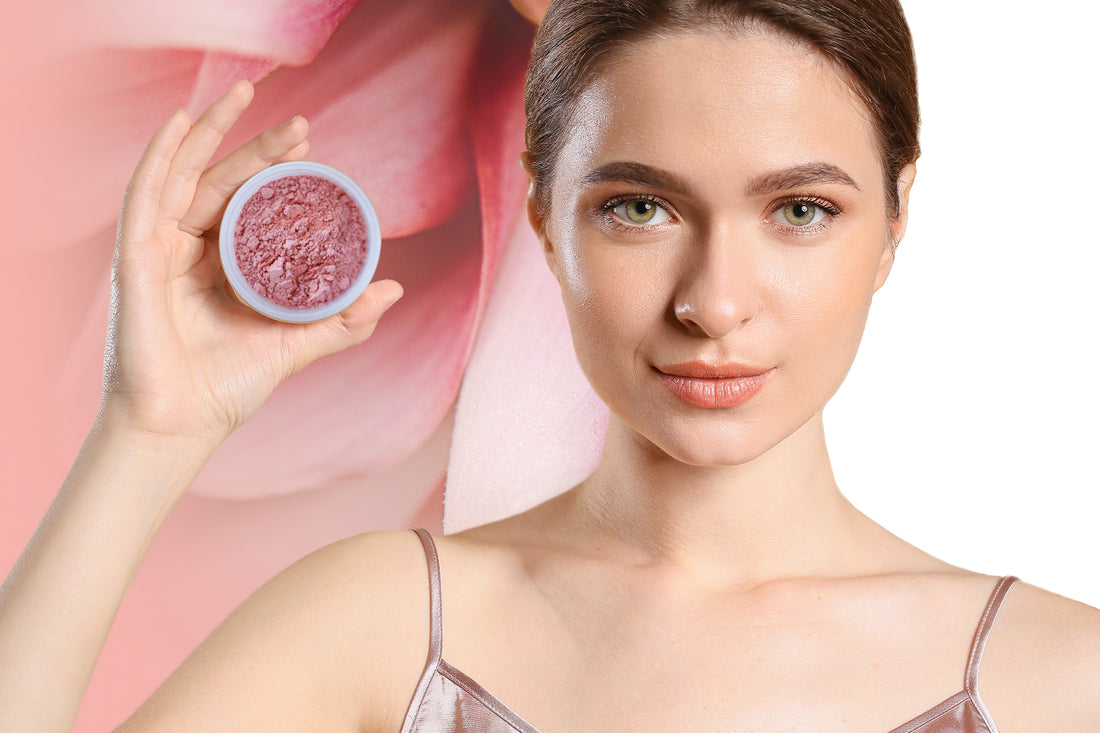
How to Use Pink Clay for Facial and Hair Masks
Pink clay, or rose clay, is one of the mildest clays and combines the properties of white and red clay, offering all the benefits of clay without irritation; therefore, it is highly beneficial for sensitive, dehydrated, dull, allergic-prone skin and skin with dilated capillaries or rosacea. French Pink clay is a standard ingredient in body wraps in 'spas' and beauty offices, in manufacturing soaps, facial masks, mineral-based cleansers or creams, facial or body scrubs, cosmetics, and powder or liquid blush.
Benefits of Pink Clay
Exfoliates, detoxify, and soothes!
Normal, sensitive, and mature skin. Suitable for normal, sensitive, and mature skin, pink clay is used to exfoliate and detoxify the skin without removing the skin's natural oils, remove dead skin cells, and nourish and revitalize the skin and hair. Pink clay also effectively treats acne and other skin disorders, poor circulation, and sun-damaged skin.
Dry and/or eczema-prone skin. Pink clay is also suitable for dry skin and/or skin with eczema, or even oily and blemish-prone skin, as pink clay helps to soothe the inflammation that is an integral part of these skin problems.
Blemished skin. The soothing properties of Pink Clay masks, together with their antibacterial and anti-inflammatory benefits, gently detoxify the skin, promoting the reduction of existing blemishes and preventing the appearance of new ones. As a result, pink clay often provides smoother, less inflamed, congested skin when used regularly.
It mattifies and brightens the skin.
Dead skin cells, impurities, and dehydration cause dull skin. The pink clay mask gently exfoliates and extracts impurities helping to unclog pores, and eliminate and prevent the appearance of blackheads, pimples, and blemishes (from excessive sun exposure and skin aging) while mattifying and brightening the skin, which makes pink clay a plurivalent ingredient.
Prevents wrinkles and expression lines.
Rose clay masks also assist in naturally promoting younger, hydrated skin, reducing wrinkles and expression lines by increasing the number of collagen fibers and stimulating collagen synthesis, preventing the appearance of wrinkles.

How many times a week can I use pink clay on my skin and hair?
Rose clay masks, or any clay, should not be applied daily but can and should be used regularly to reap their benefits. Pink clay does not excessively remove the natural oils in the skin and scalp. It helps maintain the balance of the hydrolipidic mantle, so it can be applied 1-2 times a week. Pink clay hair masks should be used only on the scalp.
How long should I leave the rose clay mask on?
Contrary to popular belief, a clay mask should be left on until it almost completely dries on the skin. This is when the clay absorbs more impurities from the pores and excess oil.
The belief that a clay mask will also absorb all moisture from the skin, drying it out even more, needs to be revised. Logically, the mask will absorb some moisture, sebum, impurities, and dead skin cells, but nothing that a subsequent moisturizing does not immediately resolve.
The duration of the rose clay on the skin may vary depending on the thickness of the layers you apply. So the idea is to prepare the mask until you get a consistent and homogeneous paste, not too watery and not too thick, that starts to dry 10 to 15 minutes after application on the skin, and 10 to 20 minutes on the hair, because clay goes through 3 phases when applied.
- Wet Phase. The first phase, or wet phase, is when the clay performs nourishment and passes its minerals to our skin.
- Cooling and Exfoliation Phase. The second phase, or cooling and exfoliation phase, is when the clay begins to repel the skin a little and starts to dry out, producing the absorption effects, which help remove dead skin cells, and accelerate the renewal process, healing, and even skin tone. At this stage, the clay particles absorb excess sebum and remove impurities from the skin. This is the proper phase to remove the clay.
- Dry Phase. In the third or dry phase, when the clay becomes completely dry and crumbly, it produces more extreme effects of absorption and exchange of fluids from inside to outside that draw water from the skin and can over-dry or irritate more sensitive skin. Avoid withdrawing at this stage, but if it happens, hydrate the skin well and ingest water throughout the day to rebalance the skin's water levels.

Rose Clay Calming Facial Mask
- Mix approximately 38 g of pink clay with 3 tablespoons of water. Add 1 teaspoon of jojoba oil and two drops of chamomile essential oil. You can replace the water with floral water or aloe vera juice/gel.
- Stir well until it forms a homogeneous paste, not too liquid or thick.
- Apply the mask with a brush, or your fingers, on the clean skin without makeup. If you apply your mask with your fingers, it is essential to have clean hands.
- Leave the mask on for 10 to 15 minutes, and do not touch your face, nose, or eyes.
- Meditate, breathe deeply, and potentiate the calming effect of this mask.
- Remove the mask gently, with water at room temperature if your skin is more oily or with warm water if your skin is dehydrated, as warm water helps to stimulate the skin's natural oiliness.
- Moisturize with a natural organic cream or oil or your moisturizer of choice.
- Smile!
Foam Baths and Shampoos
Add 5-10% clay to the product and let it settle. Shake well before use. You can also use the dry rose clay powder as a dry shampoo.
